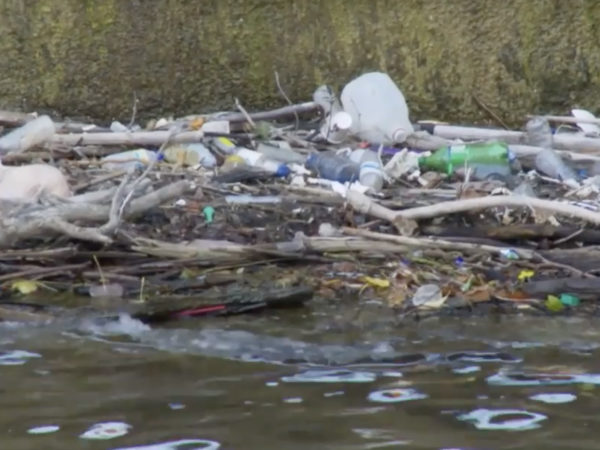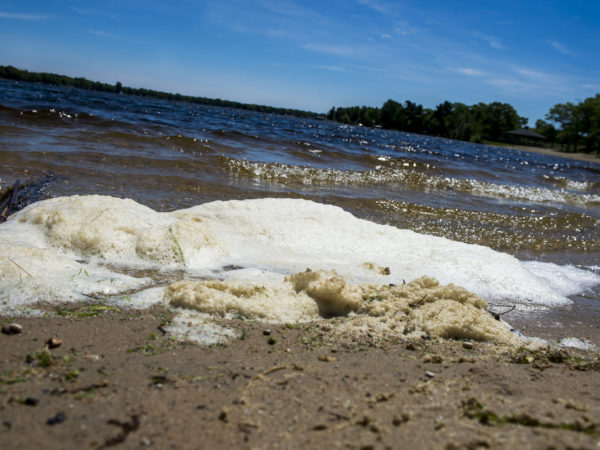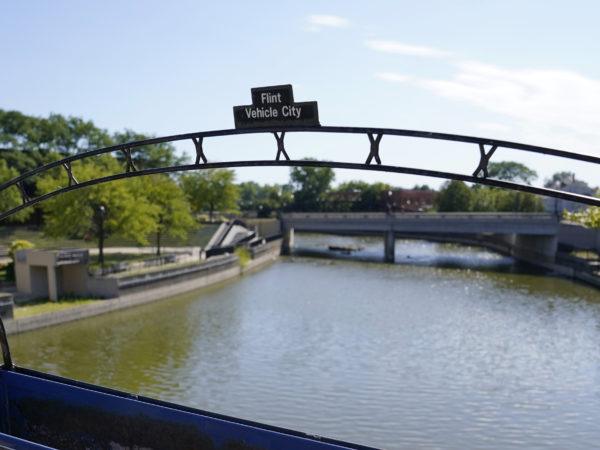
By Nina Elkadi, Inside Climate News
This article originally appeared on Inside Climate News, a nonprofit, non-partisan news organization that covers climate, energy and the environment. Sign up for their newsletter here.
The aquifer from which Joliet, Illinois, sources its drinking water is likely going to run too dry to support the city by 2030—a problem more and more communities are facing as the climate changes and groundwater declines. So Joliet eyed a huge water source 30 miles to the northeast: Lake Michigan.
It’s the second-largest of the Great Lakes, which together provide drinking water to about 10 percent of the U.S. population, according to the National Oceanic and Atmospheric Administration’s Office for Coastal Management.
Soon, Joliet residents will join them. After years of deliberation, their city government decided last year to replace the aquifer by piping it in from Lake Michigan, buying it from the city of Chicago.
Project construction will start in 2025 with the intent to have water flowing to residents by 2030, said Theresa O’Grady, an engineering consultant working with the city of Joliet. Joliet will foot the approximately $1 billion bill for the project, including the cost to build 65 miles of piping that will transport water from Chicago to Joliet and neighboring communities.
Not just anyone can gain access to Lake Michigan’s pristine, saltless water. That’s rooted in the Great Lakes Compact, an agreement that governs how much water each state or Canadian province can withdraw from the lakes each day. With some exceptions, only municipalities located within the 295,200-square-mile basin (which includes the surface area of the lakes themselves) can get approved for a diversion to use Great Lakes drinking water.
Joliet is one of those exceptions.
“I’ve seen occasional news stories about, ‘Is Kansas suddenly going to get Lake Michigan water because Joliet got Lake Michigan water?’ We are going above and beyond to demonstrate how much we respect the privilege we have to use Lake Michigan water. We are spending hundreds of millions of dollars to be good stewards of that,” said Allison Swisher, Joliet’s director of public utilities.
In April 2023, then-Chicago Mayor Lori Lightfoot signed an agreement with Joliet and five other nearby communities to supply them with treated Lake Michigan water. Now, legal experts and other Great Lakes communities are left wondering how Joliet, located well outside of the Great Lakes basin, fits in.
The Exemption in the Great Lakes Compact
The Great Lakes Region, which encompasses portions of New York, Pennsylvania, Ohio, Indiana, Illinois, Michigan, Wisconsin and Minnesota, as well as the Canadian province of Ontario, is governed through the Great Lakes Compact, enacted in 2008.
“If you do not live in a straddling community, or you’re not a city in a straddling county, you don’t have a ticket to the dance. You can’t even ask for a Great Lakes water diversion,” said Peter Annin, director of the Mary Griggs Burke Center for Freshwater Innovation at Northland College and author of The Great Lakes Water Wars.
“With the exception of the state of Illinois,” he added.
The Chicago exemption, as it is often referred to, has roots in the 1800s, when animal waste from the city’s stockyards would flush into the Chicago River, ultimately pouring into Lake Michigan.
“That’s why Chicago embarks on this massive Panama Canal-like water diversion project, to take all that sewage and put it into this long canal, which then would connect with the Des Plaines River southwest of the city, and then the Illinois River, and then the Mississippi River,” Annin said, referring to the infamous reversal of the Chicago River. “Chicago’s solution was to flush its toilet to St. Louis.”
Every day, Chicago had the right to use billions of gallons of Lake Michigan water to divert this water and dilute the pollution downstream. The state of Wisconsin began challenging the diversion in the 1920s, arguing that Illinois’ superfluous water use was depleting water levels in the lake. In 1967, the Supreme Court sided with Illinois, and now, Chicago can do whatever it wants with its 2.1 billion gallons per day.
“So here we are today with this really kind of unbelievable Joliet water diversion proposal,” Annin said.
The Great Lakes Compact protects Illinois’ right to continue diverting more water than its other Great Lakes neighbors. According to Annin, Illinois would not agree to the compact otherwise.
“Joliet now has not only arguably the worst groundwater situation in the Great Lakes region, but also compared to many other parts of the United States, and it’s desperate,” Annin said. “It’s a classic case of unsustainable water use, and in their desperation, they’ve taken advantage of the Supreme Court decree and asked to cut this billion-dollar deal with the city of Chicago to put this big water diversion all the way down there, which completely blows the doors off geographically.”
Regional Woes
Joliet is not the first jurisdiction outside the watershed to attempt to get water from Lake Michigan. In 1987, Lowell, Indiana, applied to get Lake Michigan water due to high fluoride levels in its own supply. Even prior to the Great Lakes Compact, all eight governors within the basin had to agree on any diversions. Michigan Gov. John Engler denied Lowell’s request. In 2016, the city of Waukesha, Wisconsin, located within a straddling county of the Great Lakes water basin, applied for Lake Michigan water due to radium contamination in its water. That request was approved.
“I think part of the impetus behind the compact was that we didn’t want [what’s happening in Joliet] happening. We didn’t want Great Lakes water being sold outside the basin, or, for example, being trucked in tanker trucks, or shipped in tanker ships outside the basin for sale somewhere else,” said Dave Strifling, director of the Water Law & Policy Initiative at Marquette University Law School. “What makes this particularly controversial is that Joliet is outside the Great Lakes basin. There is no dispute about that.”
Joliet’s unprecedented diversion is a uniquely Illinois situation.
“I don’t think this means that the city of Milwaukee, for example, could decide to sell water to Phoenix. This is a special case that’s carved out in the compact and it’s a limited amount [of water]. It is a large amount when you look at it in isolation, but not compared to the total volume in the Great Lakes,” Strifling said.
Strifling believes the greatest risk to the compact would be a future scenario where another community in a Great Lakes state, but outside the basin, experiences a water shortage.
“And yet, there’s this plentiful Great Lakes water just on the other side of the basin. There would be a lot of political pressure on a governor of a Great Lakes state to allow … Great Lakes water to be delivered to that area that’s experiencing severe water shortage. So that’s the big test to me. It’s not the Phoenix scenario or the Los Angeles scenario,” Strifling said.
As it stands now, Joliet is set to become Chicago’s second-largest water customer through the formation of its six-community consortium, the Grand Prairie Water Commission. (Chicago’s largest customer is the DuPage Water Commission, which provides water to residents of DuPage County, west of the city.)
“The fact that Illinois is now making money on their special deal, or I should say Chicago is making money on their special deal, sort of rubs salt in the wounds for others in the Great Lakes region,” Annin said. “But they can do it, and they are. [Chicago] has the water, and [Chicago] needs the money.”
Reporting for this story was made possible with a fellowship from the nonprofit Institute for Journalism & Natural Resources.
Catch more news at Great Lakes Now:
Chicago’s beach season is over … or is it? Lake Michigan temps are breaking records.
How do fish survive in large urban waterways, like the Chicago River?
Featured image: Lake Michigan (Great Lakes Now Episode 1027)




